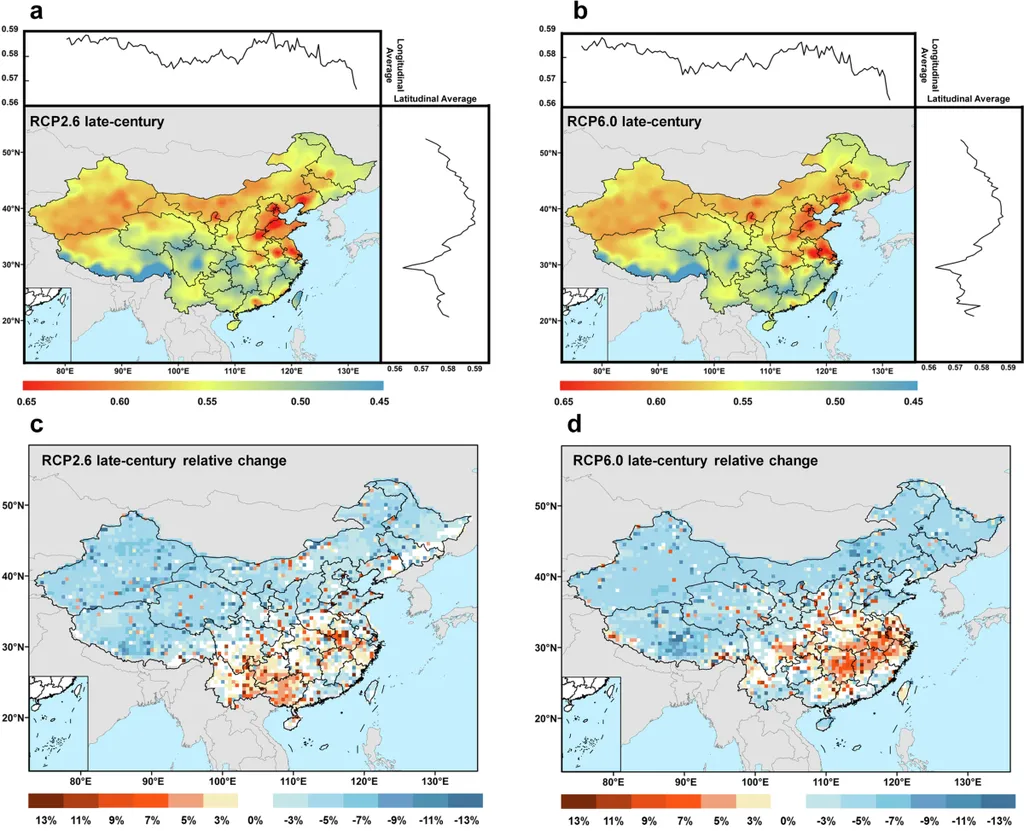In the heart of China’s Beijing-Tianjin-Hebei (BTH) region, a silent shift is underway, one that’s reshaping the agricultural landscape and intensifying water scarcity. A recent study published in *Frontiers in Sustainable Food Systems* has uncovered a significant southward migration of winter wheat planting areas, a trend that’s sending ripples through the agriculture sector and raising critical questions about water management and food security.
The research, led by Qi Yan from the State Key Laboratory of Efficient Utilization of Arid and Semi-arid Arable Land in Northern China, has revealed a 58-kilometer southward shift in winter wheat planting centroids over the past three decades. This spatial redistribution, coupled with temporal changes in planting areas, has led to a stark increase in water resource disparities.
“The unit-area water footprint in southern regions increased 2.6 times more than in northern areas,” Yan explained. This surge in water demand has seen blue water requirements—water from rivers, lakes, and reservoirs—skyrocket by 68.7%, reaching a staggering 11.3 billion cubic meters. Meanwhile, green water, or rainfall, has declined by 72.0%, exacerbating the region’s water stress.
The study’s high-precision mapping approach, which integrates multi-source remote sensing and meteorological data, has provided an unprecedented view of winter wheat planting dynamics. The findings reveal three distinct phases: an initial increase in planting areas, followed by a decrease, and eventual stabilization. However, it’s the spatial heterogeneity in water resource sensitivity that has raised the most eyebrows.
“This spatial heterogeneity demonstrates that different regions exhibit markedly different vulnerabilities,” Yan noted. This variability underscores the need for region-specific water management strategies, a point that’s not lost on the agriculture sector.
The commercial impacts of this research are profound. As water scarcity intensifies, so too does the pressure on farmers and agribusinesses to adapt. The study’s recommendations—implementing irrigation quotas, crop rotation systems, and coordinated water-food optimization plans—could significantly enhance agricultural sustainability and resilience.
Moreover, the research highlights the urgent need for investment in precision agriculture technologies. High-resolution spatial distribution data, like that used in this study, could become a game-changer, enabling farmers to optimize planting patterns and water use.
As climate change and population growth continue to intensify, the conflict between food production and water scarcity will only worsen. This study serves as a stark reminder of the need for adaptive, region-specific strategies. It’s a call to action for the agriculture sector to embrace innovation and collaboration, ensuring a sustainable and secure food future.
In the words of Qi Yan, “Understanding how crop planting patterns evolve over space and time and regulating regional water footprints is critical for achieving sustainable agriculture under water constraints.” The question now is, how will the agriculture sector rise to this challenge?

